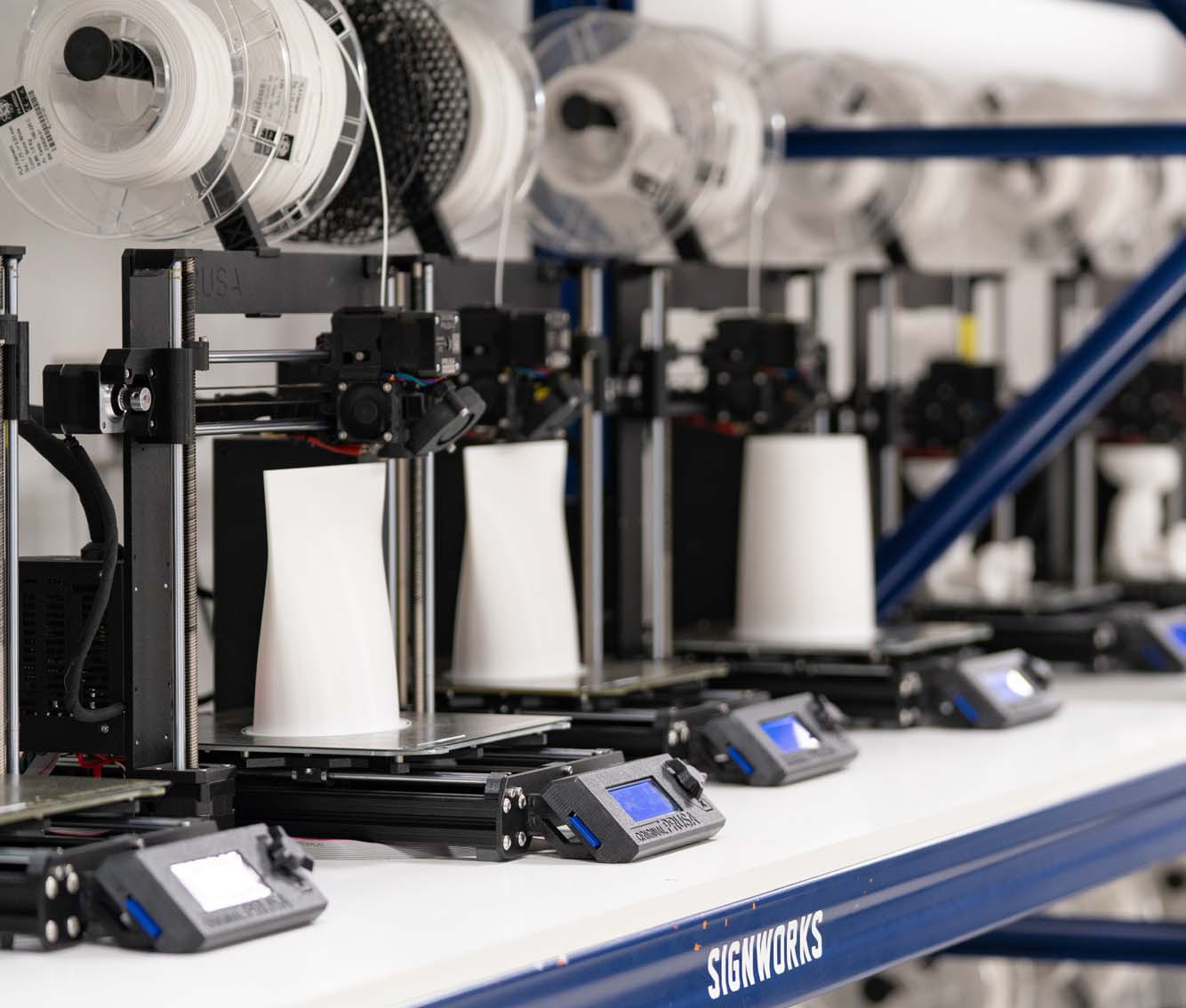3D printing is no longer a niche technology; it has become a transformative force across multiple industries, with its influence growing at an exponential rate. As we look toward the future, there are key trends and innovations shaping the trajectory of this technology. Let’s explore what’s on the horizon and how 3D printing is set to impact manufacturing, healthcare, and retail.
1. Materials Innovation: Beyond Plastics
In the early days of 3D printing, the focus was primarily on plastics. But with technological advancements, the range of materials available has expanded dramatically. Future trends point to:
- Metal 3D Printing: Innovations in metal 3D printing are poised to revolutionize industries such as aerospace, automotive, and medical device manufacturing. The ability to print intricate metal parts with high precision reduces costs and enhances product performance.
- Biomaterials: In healthcare, 3D printing with biomaterials is becoming increasingly prevalent. Researchers are exploring the use of living cells in 3D printing to create organ tissues, prosthetics, and personalized medical solutions.
- Recycled and Sustainable Materials: As sustainability takes center stage, more companies are turning to recycled plastics, biodegradable filaments, and sustainable materials to print eco-friendly products.
2. Speed and Efficiency: The Rise of Hybrid Manufacturing
Speed has always been a limiting factor in 3D printing, especially for mass production. However, we’re seeing rapid strides in improving print speeds without compromising quality.
- Hybrid Manufacturing: The combination of traditional manufacturing methods like injection molding and 3D printing is making it possible to produce products faster and more cost-effectively. Hybrid approaches allow for faster prototyping, reduced waste, and shorter production times.
- Faster Printing Technologies: Innovations such as continuous 3D printing (e.g., Carbon’s CLIP technology) are significantly speeding up the process, allowing for large-scale production and minimizing the gap between prototype and final product.
3. AI and Automation: Smarter 3D Printing
Artificial intelligence (AI) is entering the 3D printing world, optimizing every aspect of the printing process. From design to material selection and post-processing, AI algorithms are helping manufacturers streamline production.
- Generative Design: AI-powered software can generate complex and optimized structures that would be impossible or too costly to manufacture using traditional methods. This technology helps create parts that are lighter, stronger, and more efficient.
- Automation in Post-Processing: The post-processing phase of 3D printing is notoriously time-consuming. However, AI and robotic systems are being developed to automate these steps, making the entire process more efficient.
4. 3D Printing in Healthcare: Personalized Medicine and Bioprinting
The healthcare industry is one of the most exciting fields for 3D printing. With the ability to create customized solutions, 3D printing is pushing the boundaries of what’s possible.
- Personalized Prosthetics and Implants: 3D printing enables the production of prosthetics and implants tailored specifically to an individual’s anatomy, ensuring a perfect fit and faster recovery.
- Organ Printing: One of the most ambitious innovations on the horizon is the development of bio-printing technologies that could print organs and tissues. Although still in the early stages, this could address the growing need for organ donations and revolutionize treatments for conditions like organ failure.
- Drug Delivery Systems: 3D printing technology is being explored for creating personalized drug delivery systems that release medication in a controlled manner based on individual needs.
5. On-Demand Production and Local Manufacturing: The Decentralization of Manufacturing
The concept of local manufacturing through 3D printing is changing how goods are produced and delivered. As the cost of 3D printers continues to drop, more businesses will be able to set up localized manufacturing hubs.
- On-Demand Manufacturing: Companies are beginning to use 3D printing to produce items only when they’re needed, reducing inventory costs and eliminating waste from unsold goods. This trend will likely become more prevalent in industries like fashion, footwear, and consumer goods.
- Decentralized Production: 3D printing makes it possible to move production closer to consumers, reducing shipping costs, and improving delivery times. Localized production centers could minimize the global supply chain disruptions we’ve seen in recent years.
6. Smart Retail and Customization: Redefining the Consumer Experience
In the retail world, 3D printing is enabling the rise of mass customization. Consumers are increasingly looking for products that reflect their individuality, and 3D printing is the perfect tool for meeting this demand.
- Customized Products: From bespoke jewelry to personalized footwear, 3D printing is allowing customers to design their own products or choose from a range of customizable options. This enhances the consumer experience and drives engagement.
- Faster Product Iteration: Retailers can rapidly prototype new products and bring them to market faster using 3D printing. This allows them to respond to trends quickly and introduce new, innovative designs.
7. 3D Printed Fashion: Clothing of the Future
Fashion designers are beginning to experiment with 3D printing to create futuristic clothing and accessories. From printed shoes to dresses, the possibilities are endless.
- Wearable 3D-Printed Fashion: Fashion houses like Iris van Herpen and Adidas have already begun to use 3D printing for custom clothing and accessories. As technology evolves, more designers will explore the use of 3D printing for intricate designs and fabrics.
- Sustainable Fashion: The fashion industry is one of the largest polluters in the world. With 3D printing, designers can print clothing on demand, minimizing waste and reducing the environmental impact of mass production.
Conclusion: A World Transformed by 3D Printing
As we look to the future, it’s clear that 3D printing will continue to disrupt and transform industries, from healthcare to retail. The ability to produce customized, complex, and sustainable products on-demand will only grow more significant. With technological advancements, materials innovation, and smarter processes, the possibilities for 3D printing are virtually limitless, and its impact will be felt across every aspect of our lives.
Whether it’s improving patient outcomes with custom implants, enabling designers to create one-of-a-kind fashion pieces, or changing the way products are manufactured and delivered, the future of 3D printing promises a world of innovation, convenience, and sustainability.

